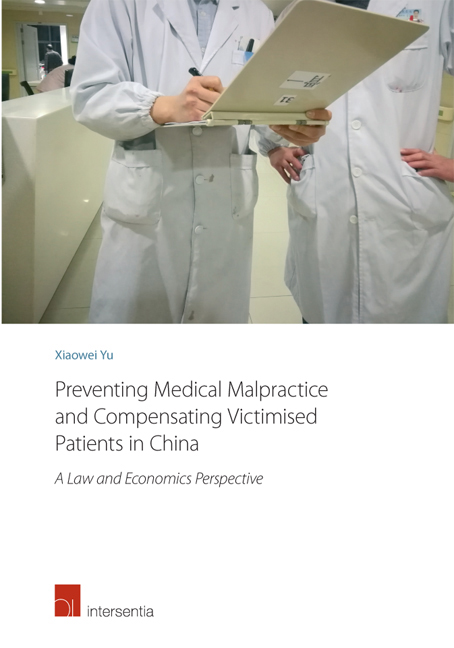 Preventing Medical Malpractice and Compensating Victimised Patients in China
Preventing Medical Malpractice and Compensating Victimised Patients in China from Part I - Legal Remedies for Medical Malpractice in China
Published online by Cambridge University Press: 29 September 2018
This part is intended to answer the first main research question – Are the current legal remedies for medical malpractice in China sound from a legal perspective? For this purpose, firstly, it is necessary to know what are the legal remedies currently available in China that are aimed at the prevention of medical malpractice and the compensation of victimised patients (Subquestion (1-a)). In China, both public regulation (incl. criminal law) and tort law may be used to prevent medical malpractice. Victims of medical malpractice may obtain compensation via tort law, private insurance, or social security.
Regulation of the medical profession will be described in Chapter 2. In addition, Chapter 2 will also sketch the outline of the Chinese health care provision system intending to provide the context of medical malpractice in China.
The part of the tort system that deals with medical malpractice will be addressed in Chapters 3 and 4. Chapter 3 will describe the “law in the books” – substantive rules of medical malpractice liability and relevant rules of evidence. Chapter 4 will examine the “law in action” – empirical findings concerning the functioning and impact of the medical malpractice liability system.
Other compensation schemes that may provide victims of medical malpractice with some remedies will be briefly addressed in Chapter 5. In China, these schemes may include medical liability insurance, first-party private insurance, and social security (social insurance and administrative assistance).
After describing these legal remedies, they will be evaluated according to traditional legal doctrines (Sub-question (1-b)). In Chapter 6, traditional legal doctrines or benchmarks that prevail in China will be summarised. Then, the foregoing legal remedies will be evaluated in light of these traditional legal benchmarks. Thereafter, the weaknesses of the traditional approach will be pointed out and the need for a law and economics approach will be explained.
To save this book to your Kindle, first ensure no-reply@cambridge.org is added to your Approved Personal Document E-mail List under your Personal Document Settings on the Manage Your Content and Devices page of your Amazon account. Then enter the ‘name’ part of your Kindle email address below. Find out more about saving to your Kindle.
Note you can select to save to either the @free.kindle.com or @kindle.com variations. ‘@free.kindle.com’ emails are free but can only be saved to your device when it is connected to wi-fi. ‘@kindle.com’ emails can be delivered even when you are not connected to wi-fi, but note that service fees apply.
Find out more about the Kindle Personal Document Service.
To save content items to your account, please confirm that you agree to abide by our usage policies. If this is the first time you use this feature, you will be asked to authorise Cambridge Core to connect with your account. Find out more about saving content to Dropbox.
To save content items to your account, please confirm that you agree to abide by our usage policies. If this is the first time you use this feature, you will be asked to authorise Cambridge Core to connect with your account. Find out more about saving content to Google Drive.